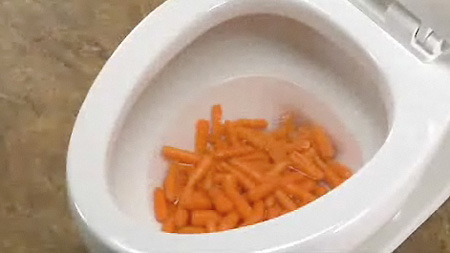Any individual seems to have his or her own thinking when it comes to What Can Happen If You Flush Food Down the Toilet?.

Intro
Lots of people are usually faced with the dilemma of what to do with food waste, particularly when it involves leftovers or scraps. One usual concern that arises is whether it's alright to flush food down the bathroom. In this article, we'll look into the reasons individuals may take into consideration flushing food, the repercussions of doing so, and different methods for proper disposal.
Reasons why people may consider purging food
Absence of awareness
Some individuals might not know the prospective damage caused by flushing food down the commode. They might incorrectly believe that it's a harmless practice.
Benefit
Flushing food down the bathroom might feel like a quick and very easy solution to getting rid of unwanted scraps, particularly when there's no nearby trash bin available.
Idleness
In many cases, individuals might just pick to flush food out of sheer idleness, without taking into consideration the consequences of their activities.
Consequences of flushing food down the toilet
Environmental effect
Food waste that winds up in rivers can add to contamination and injury water ecosystems. Additionally, the water utilized to purge food can stress water resources.
Pipes issues
Purging food can result in stopped up pipelines and drains, creating costly plumbing repair services and inconveniences.
Kinds of food that ought to not be purged
Coarse foods
Foods with fibrous textures such as celery or corn husks can get tangled in pipelines and trigger blockages.
Starchy foods
Starchy foods like pasta and rice can absorb water and swell, causing obstructions in pipes.
Oils and fats
Greasy foods like bacon or food preparation oils need to never ever be flushed down the toilet as they can solidify and create clogs.
Appropriate disposal methods for food waste
Utilizing a garbage disposal
For homes geared up with garbage disposals, food scraps can be ground up and purged with the plumbing system. Nonetheless, not all foods are suitable for disposal in this way.
Recycling
Certain food product packaging products can be recycled, lowering waste and lessening ecological effect.
Composting
Composting is an environmentally friendly way to deal with food waste. Organic products can be composted and utilized to improve dirt for gardening.
The importance of appropriate waste management
Decreasing environmental injury
Correct waste administration techniques, such as composting and recycling, aid lessen air pollution and protect natural resources for future generations.
Securing pipes systems
By preventing the practice of flushing food down the toilet, homeowners can stop costly plumbing repair services and keep the integrity of their pipes systems.
Verdict
In conclusion, while it might be tempting to purge food down the commode for ease, it is very important to understand the prospective consequences of this activity. By taking on proper waste monitoring methods and disposing of food waste responsibly, people can add to healthier plumbing systems and a cleaner setting for all.
FLUSH FOOD DOWN THE TOILET?
FLUSHING FOOD CAN CAUSE BLOCKED DRAINS IN YOUR HOME
All of the plumbing fixtures in your home are connected to the same sewer pipe outside of your home. This outdoor sewer pipe is responsible for transporting all the wastewater from your home to the Council sewer mains. Even small pieces of food that go down the kitchen sink can cause problems for your sewer. It should therefore be obvious that flushing larger bits of food, such as meat, risks a clog in either the toilet itself or the sewer pipes. Flushing greasy food is even more problematic because oil coagulates when it cools, coating the interior lining of your pipes.
THE TOILET IS NOT A BIN
Food isn’t the only thing that people shouldn’t be flushing down the toilet. People use the toilet to dispose of all kinds of things such as tampons, makeup wipes, dental floss, kitty litter and even underwear. Water goes to great lengths to educate residents about the high costs and stress placed on wastewater treatment systems simply from people flushing the wrong stuff down the toilet. It costs taxpayers millions of dollars each year, and homeowners thousands in blocked drain repairs.
FLUSHING FOOD IS A WASTE OF WATER
Flushing food is a waste of our most precious resource - water. In June this year Level 1 water restrictions were introduced to protect water supply from drought conditions. Much of New South Wales continues to be affected by prolonged drought with recent figures revealing up to 97 per cent of the state remains in drought. Depending on whether you have a single or dual flush toilet, every single flush uses between five and 11 litres of water. In the current climate this is a huge amount of water to be wasting on flushing food that should be placed in the bin (or better yet, the compost).
https://www.jabplumbingsolutions.com.au/blog/can-you-flush-food-down-the-toilet

As an avid reader about Think Twice Before Flushing Food Down Your Toilet, I thought sharing that short article was really helpful. Are you aware of somebody else who is truly interested in the subject? Feel free to share it. I am grateful for being here. Revisit us soon.
Request An Appointment